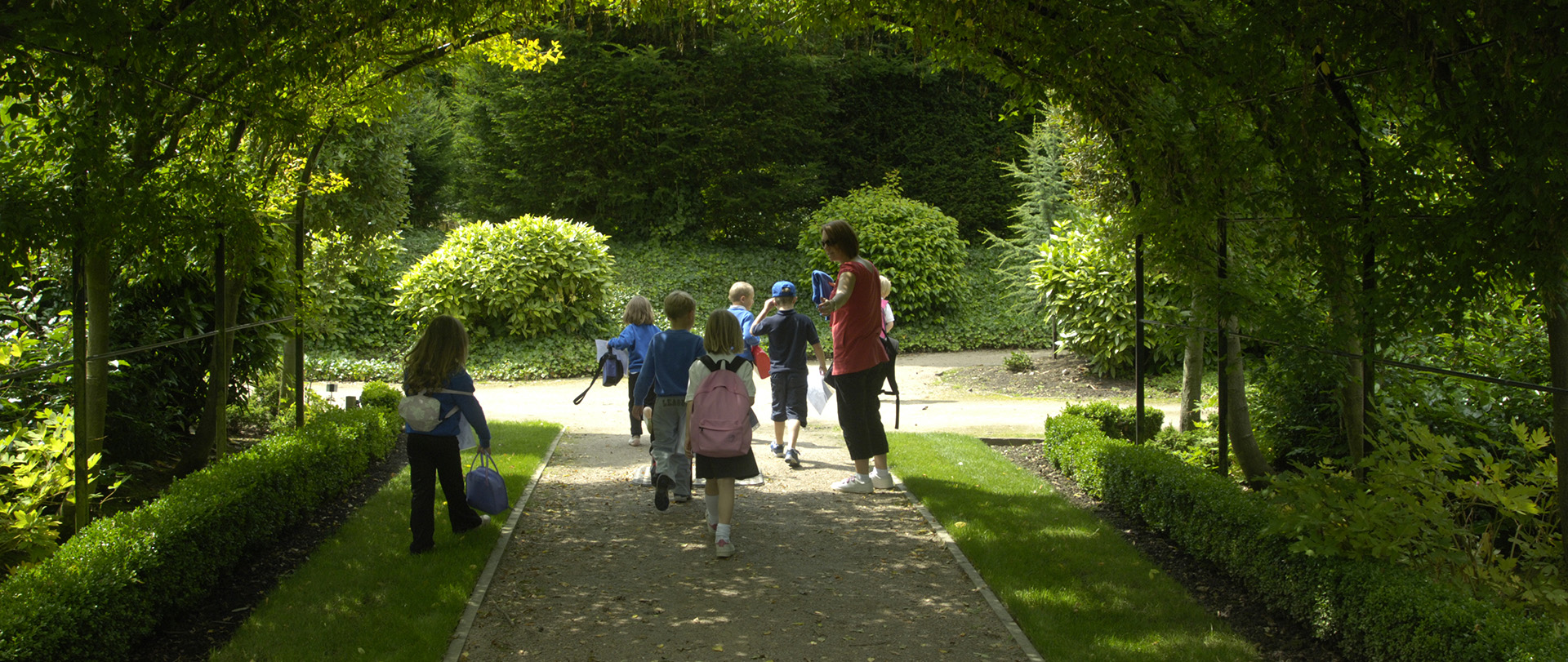Opening Sites and Events
Advice on opening up a historic park or garden to visitors, and considerations when planning large scale events.
Opening for visitors and schools
Historic England’s Easy Access to Historic Landscapes provides guidance on improving access to historic landscapes for all visitors whatever their age or level of ability.
The National Lottery Heritage Fund also offers guidance on audience development.
Planning large scale events
There is a long tradition of events being held in historic parks and gardens. They have been special venues for fêtes and community celebrations. Individual parks have become renowned venues for major sporting events like horse trials or large scale summer festivals and flower shows.
Since the approved premises changes introduced in the 1994 Marriage Act, historic houses, parks and gardens have become popular for wedding ceremonies. These and other events have grown to become an important income stream for many properties. The number of commercial events in public parks in particular has increased rapidly in recent years in a drive to plug local authority budget cuts. The size of events and their frequency; visitor numbers; and the temporary/semi-permanent/permanent nature and scale of event infrastructure, visitor facilities and car parking have been growing.
As well as generating much needed funds, events can be costly. They can result in damage and wear and tear at sites. While they're taking place and being set up and cleared up, the enjoyment, appreciation and understanding of these sites by other visitors and users may be harmed.
Our 2010 guidance sets out the key considerations in managing temporary structures and events projects, how proposals are evaluated, planning permission and other consents, and advice on management practices and precautions.
Along with a planning application, you are likely to need to prepare a Heritage Statement if the site is of historic interest. As well as considering the specific event(s), the Heritage Statement should also look at the whole calendar of events and their cumulative impacts on the site, its historic significance and its primary role as a designed landscape.
Other useful guidance:
- The Woodland Trust and Ancient Tree Forum’s Ancient Tree Guide no.8: Trees and events
- The Royal Parks’ Hosting Major Events in the Royal Parks
- Many local authorities provide online guidance for event organisers
Falconry displays
Falconry displays, especially where falconry is associated with a historic site, can be an interesting and fascinating event for visitors.
Falconry, hunting using trained birds of prey, was introduced to Britain in the early Middle Ages and was widely practised both for obtaining food and as a sport. It is likely to have been carried out at many properties and therefore has a long history of association with historic sites. Modern falconry is essentially unchanged from the Middle Ages but falconry displays are now more common than actual hunting. These displays allow the public to see birds at close quarter and to watch them flying and stooping as if catching prey. The considerable knowledge and skills involved in falconry is also of historic interest.
Properly conducted displays do not involve the use of live prey and do not harm the birds of prey. All falconers have to register to keep birds of prey. Property owners or managers have a responsibility to ensure that, while there may be considerable benefits from hosting falconry displays, they are carried out legally and do not conflict with other objectives for the site, for example nature conservation. Falconry events or displays of captive birds must not disturb wild birds of prey. Birds of prey are relatively solitary animals and particularly during the breeding season may be seriously disturbed by the presence of captive birds within their home range, even for short periods.
Fireworks, bonfires and sky lanterns
Fireworks, bonfires and lantern displays are part of Bonfire Night, Diwali, New Year, and celebration traditions. Displays need careful planning to ensure events are safe and enjoyable for all. UK Fire Service Resources provides a useful checklist. On historic sites, organisers also need to consider:
- Proximity of buildings (whether on your property or nearby) and fire risks from sparks, fireworks or sky lanterns. Fireworks and sky lanterns should never be set off near thatched buildings. The Thatch Advice Centre provides advice
- Impacts of the event on the archaeology of the site and whether you need consent
- Potential damage to the landscape and trees
- Disturbance to wildlife, especially bats which are protected by law
Each year, fireworks and sky lanterns cause damage to buildings and especially thatched roofs, and other property. Sky lanterns can float for miles before landing.
Managing visitor safety
The Visitor Safety Group provides advice and guidance on public access. The VSG’s Historic Built Environment Subgroup includes English Heritage, Historic Houses, National Trust, Chatsworth, Cadw, Historic Environment Scotland and others. The subgroup aims to identify and promote ways to manage visitor safety that sustain the heritage significance and value to society of historic places and visitor centres in historic places.
Their 2015 ‘guidance (Managing Visitor Safety in the Historic Built Environment - Principles and Practice) provides a valuable framework for managing risks to visitors which is sensitive to the historic value of the properties and landscape and does not unduly restrict public access’ (Health and Safety Executive 2015). The guidance covers:
- Balancing risk and benefit
- Guiding principles
- Planning and organising
- Assessing and managing risk
- The role of information and education in risk control
- Incident reporting and investigation
- Emergency planning and procedures
- The law and visitor safety





